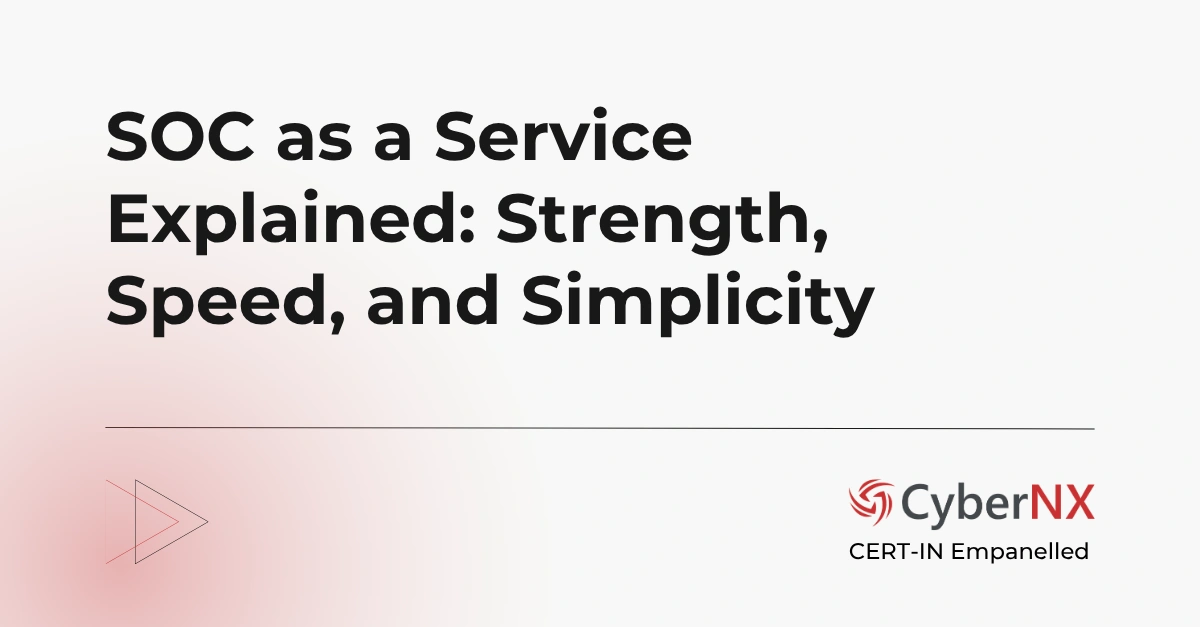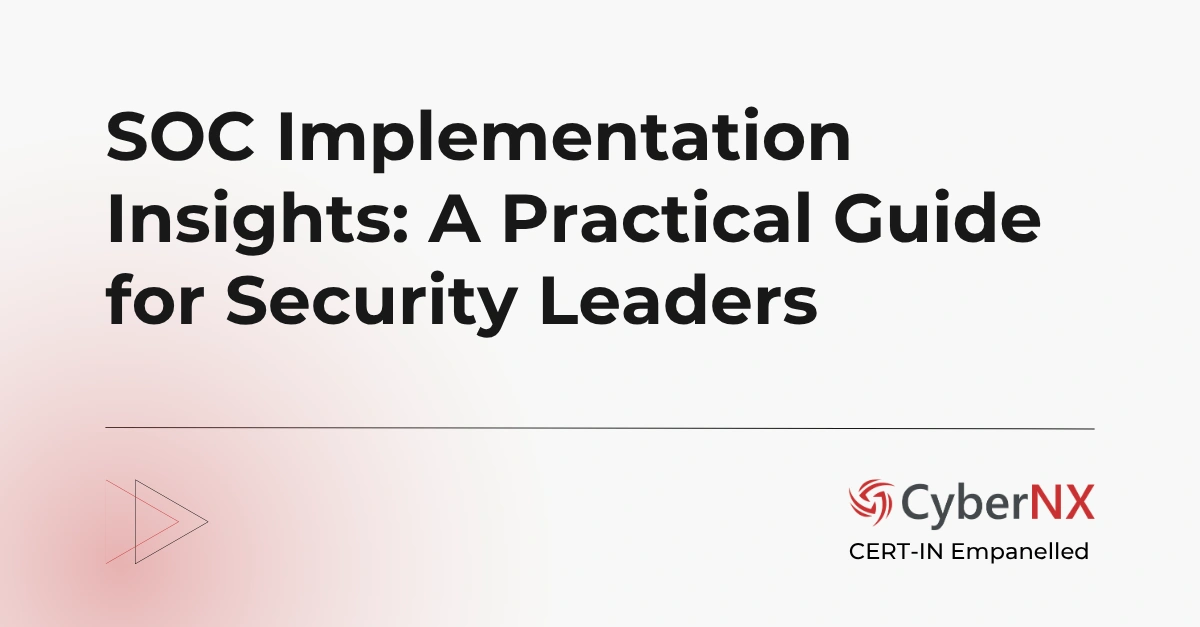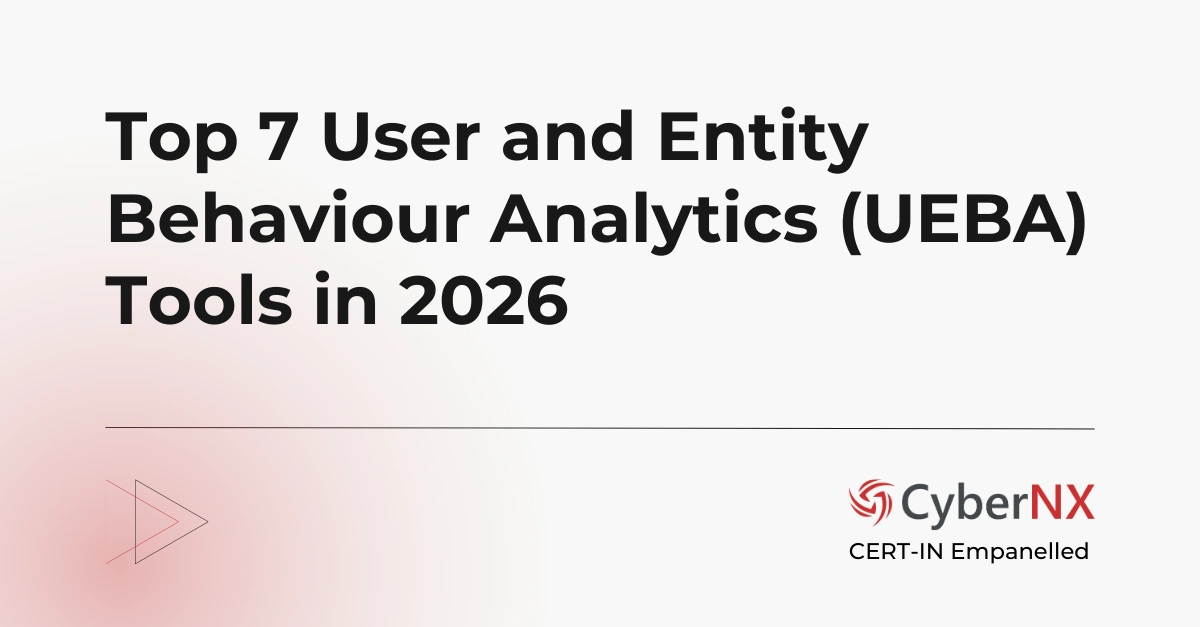Modern Security Operations Centers (SOCs) are the nerve center of modern enterprises. They monitor threats round the clock, hunt adversaries proactively and respond to incidents quickly. Find out more about what SOC is and how it helps businesses with our blog SOC Guide.
But all SOCs have different maturity levels. For instance, some would be inherently reactive and tool-heavy, others proactive and intelligence-driven.
But is your SOC maturity aligned with your specific business needs? That is an important question. A SOC Maturity Assessment offers the answer. It is a structured method to assess where your SOC stands and where needs to go.
What is SOC Maturity Assessment?
It can be understood as a systematic evaluation of every facet of security operations. It involves people, processes, SOC tools and technologies. This assessment is done against a recognized maturity model like NIST CSF.
Such an assessment expose how well a SOC is functioning.
Is it able to detect threats against the use cases given? Is it successfully analysing, quickly responding to, and supporting recovery from cyber threats as intended?
What’s more, this sort of assessment has the capability to investigate deeper and help you know:
- Is threat detection contextual and happening in real time?
- Are SOC analysts empowered by automation or are they drowning in alerts?
- Is external and internal threat intelligence truly operationalized?
- Does the implemented incident response mechanism adapt to the changing attack vectors?
The maturity assessment benchmarks your SOC capabilities across the entire spectrum such as incident response, log management, governance, automation and metrics.
This allows organizations to identify shortfalls and chart a path toward greater resilience.
Types of SOC Maturity Assessment
There are different types of maturity assessment. And different frameworks and styles are used depending on your organization’s goals, regulatory landscape and resource maturity.
Here we discuss the most common types:
1. Capability Maturity Model (CMM)-Based Assessment
This is a widely used model that examines SOC capabilities across these 5 levels:
- Level 1 – Initial: This is ad-hoc and involves manual threat handling and limited visibility.
- Level 2 – Developing: Here, organizations deal with basic use cases, use limited automation and have siloed teams.
- Level 3 – Defined: At this level, processes are documented, correlation rules exist, and basic threat intelligence is gathered.
- Level 4 – Managed: This level involves real time detection, orchestration and regular testing across the digital infrastructure.
- Level 5 – Optimized: This last level will have continuous improvement strategies in place, red teaming and even predictive defence.
2. Process-Centric Assessment
This approach is centred on the workflows. How incidents are detected, escalated and resolved is the goal. It maps security gaps in response plans, SOC roles, documentation process and governance. All these features make it ideal for compliance-driven environments.
3. Technology Stack Review
This assessment type deals with technology stack. SOC assessment specialist teams inspect technical tools such as SIEMs, SOAR platforms, EDRs and threat intelligence feeds. Further evaluation is done to find how well they are integrated and tuned to the organizational needs.
4. Hybrid Assessment
This combines process, technology and capability maturity models. Hybrid assessments are the most holistic and covers everything. They offer a panoramic view of a SOC’s effectiveness, scalability and resilience posture. Plus, it show future-readiness of your SOC.
Benefits of SOC Maturity Assessment
An assessment should ideally be continuous. Because it delivers measurable, long-term advantages that impact security, compliance, operations and even business agility.
1. Clarity Over Capability
Organizations may sometimes overestimate their SOC maturity, which can lead to drastic consequences like a data breach. The assessment helps in eliminating assumptions and gives visibility into possible issues like blind spots in threat detection to breakdown in communication between teams.
2. Targeted SOC Investment
Organization may spend too much on something thinking of quick results. It can be buying more SOC tools or adding resources blindly. With SOC maturity assessment, security leaders get data-driven guidance on where to invest.
3. Improved Incident Response
By identifying where detection-to-response cycles lag or break, SOC maturity assessments help improve Mean Time to Detect (MTTD) and Mean Time to Respond (MTTR), the key metrics in reducing breach impact.
4. Compliance & Audit Readiness
If your SOC is mature and evolved, it directly influences readiness for ISO 27001, NIST, PCI DSS and other regulatory standards. A mature SOC demonstrates clear audit trails, response protocols and governance structures.
5. Futureproofing Against Threats
A mature SOC is never static. It learns, evolves and adapts with latest attacker techniques and procedures. Maturity assessments enable SOCs to adopt proactive threat hunting and align organizations with zero trust principles over time.
Conclusion
The cyber threat landscape today is complex. It is something today and totally a different thing tomorrow. Thus, if you are operating a SOC without frequent maturity assessments, you may end up with blind spots.
Our AI managed SOC services include SOC Maturity Assessment capabilities. It transforms SOC from a reactive function to a proactive, forward-looking security initiative. Contact us today to know more.
SOC Maturity Assessment FAQs
What’s the ideal frequency for conducting a SOC Maturity Assessment?
SOC maturity shifts as your technology stack evolves, threat actors change tactics, and business priorities shift. Most organizations benefit from a formal assessment every 12 to 18 months. However, if you’re undergoing major changes – like a cloud migration, M&A activity, or implementing a new SIEM – it’s wise to reassess sooner to align your SOC with the new risk landscape.
Who should be involved in a SOC Assessment?
While the SOC team is central, a robust assessment should involve a cross-functional group: security leadership (CISO, SOC manager), IT operations, risk/compliance officers, and sometimes business stakeholders. Their input ensures the SOC is not only technically sound but also aligned with broader enterprise risk and governance goals.
Can small or mid-sized organizations benefit from a SOC Maturity Assessment?
Absolutely. In fact, for resource-constrained organizations, knowing exactly where to focus limited cybersecurity investments is critical. A maturity assessment helps SMBs prioritize what matters most – whether it’s improving log visibility, adopting managed detection, or refining response workflows – without overspending or overengineering.
How is a SOC Maturity Assessment different from a general cybersecurity audit?
A cybersecurity audit checks compliance against predefined standards (like ISO 27001 or NIST CSF). In contrast, a SOC Maturity Assessment is more strategic and operational – it evaluates real-world detection, analysis, and response capabilities. It’s not about passing or failing; it’s about evolving the SOC to be faster, smarter, and more resilient.






